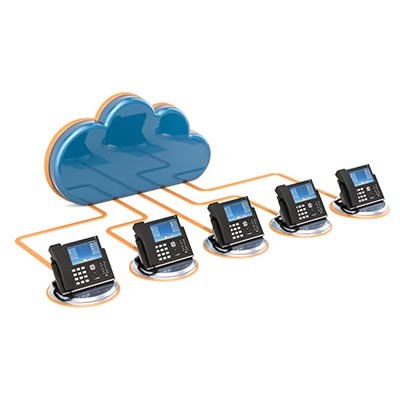Cloud computing as a whole has been one of the most transformative technologies for businesses. With so many companies (upward of 90 percent of modern businesses) using some type of cloud computing, more companies than ever are really leaning into the technology and use it for mission critical business processes. Let’s take a look at some of the ways businesses can secure their cloud resources.
k_Street Consulting, LLC Blog
Cloud computing has become a common tool, especially Software-as-a-Service (SaaS). Hosted software provides robust options that make sense to all companies, including anytime-anywhere availability, scalability, and provider management of the underlying hardware. In today’s blog, we want to discuss a couple of tips people can use when working with cloud computing.
Software is extremely important for businesses, so when you are creating the strategy and roster of applications you plan to use, you need to be smart about it. One way you can make the most out of your technology budget is to consider Software-as-a-Service (SaaS). With SaaS, your business can get the digital assets it needs at a price you can afford. Let’s discuss what makes SaaS so valuable for businesses.
The cloud has been a good resource for business for quite a while. Just how good? Currently, nine-out-of-ten businesses operate with some type of cloud-hosted solution. In fact, by the figures, we’re definitely looking at a cloud-hosted future. We thought it would be interesting to take a look at some of the cloud computing stats and trends to paint a picture of just how the cloud has grown up.
Businesses must often store documents for the purposes of compliance, but anyone who has managed a document storage system that uses physical documents, like filing cabinets or otherwise, knows that it can get a little complicated and messy. Technology offers better alternatives that make things easier, efficient, and most important of all, more secure.
There is no denying the versatility that technology like the cloud can provide, but it often comes with hidden costs that might affect its cost-to-benefit ratio for your organization. Here are some of these hidden costs, as well as what you can do to minimize the impact they have on your bottom line.
Cloud technology has changed the way we do business, and it has provided countless opportunities for companies to achieve their wildest dreams. Granted, different businesses will use the cloud in different ways, but one fact remains the same: it makes financial sense to implement the cloud, no matter what type of business you are. Let’s go over some of the benefits.
Email is a solution that your business uses just about every single day, and as one of your central methods of communication, you need to consider how it’s managed and maintained. Thankfully, modern businesses have more choices available to them than ever before, some of which are so hands-off and easy that they can completely change how a business views their email.
The cloud is a tool that businesses can use to improve operations in a variety of ways. Through the use of the cloud, businesses can dramatically alter the way they conduct themselves, many of which can reduce costs. If you implement cloud solutions, you can expect them to improve accessibility, enable scalability, and improve flexibility, all of which contribute to cost savings in the long term.
We frequently encourage our clients to consider the cloud as a viable option for their data storage needs, be they someplace to store a copy of their data backup or even their primary storage option. Having said that, it is important that we clarify that this cloud storage needs to be secure. Let’s explore how to ensure that much is true.
You may already be familiar with the concept of hosting your business’ technology on your own in-house network, like a server unit, but some businesses struggle to manage hardware like this effectively. In all honesty, you can get largely the same benefits of an in-house server through a hosted solution. Nowadays, the cloud makes utilizing cloud services easier than ever.
Whether you take advantage of it or not, the cloud is a major part of most businesses’ IT infrastructures—especially with the ongoing pandemic, which has kept many workers out of their offices and off of the in-house network. If your business is one of the few that has managed to stay afloat without the cloud, let’s change that. With a high-quality cloud solution, you can future-proof your business in ways you may not have considered.
The cloud is a great tool that lets businesses of all industries and sizes revisit the way operations are handled, but it’s not always clear what the best approach is for your specific business. What are some ways that you can utilize the cloud, and why is it so important that you start thinking about these benefits now?
Of all the technologies currently used by businesses, the Internet is a strong contender for the most important. Regardless of their size, many businesses invest thousands each month into online Software-as-a-Service solutions as a means of more affordably equipping their users. Let’s talk for a moment about another cloud platform that has seen some advancement: Infrastructure-as-a-Service.
Traditionally, if a business needed a solution to a problem, they would research which technology is the best for the problem they had and go out and buy it. If a company didn’t have the money to buy that solution, they would borrow to buy it so that their business wouldn’t stagnate and fail. In today’s tech-driven business environment there is a much better option than mortgaging your business just to save it.
The cloud has long demonstrated its many benefits to a business’ operations, but perhaps never so much as it has now. With so many people remaining in their homes, the only way that any business (essential or not) can get anything done is to adjust to remote operations—something the cloud is especially useful in. If ever there was a time to take advantage of the cloud’s capabilities, it would be now.
Collaboration has always been key to the success of businesses, and with the cloud technologies now available, collaboration is possible in more ways than ever. COVID-19 has made business connectivity more important than ever, so we saw it fitting to recognize some of the cloud’s collaboration options. They come in a few distinct flavors:
The cloud is an undeniably useful technology to implement in your business’ processes, and is a very popular option as a foreseeable result. This does not mean, however, that the cloud isn’t subject to some risks. Let’s go over a few risks the cloud presents, and how you can mitigate them by selecting the right provider.
Cloud computing is generally accepted today as a good option for businesses. While we aren’t arguing that this isn’t the case, we wanted to make sure that your cloud use--actual or theoretical--was sufficiently secure. Many will neglect to consider how secure their use of cloud solutions is, which is something that we’d like to fix.
When you look at cloud services, it can be easy to wonder how it is so beneficial for businesses. After all, the monthly service charges are attractive, but how do they provide the value outside of cost? To understand how the cloud brings rapid and sustainable ROI, it may help to look at an analogy.
Servers are the brains of your business insofar that’s where most of the critical information is stored, and a server failure (with no contingency plan in place) could spell the end-times for your business. With that information, you should be looking for the most reliable option that works for you. Today, we’re going to look at the differences between using hosted servers vs. paying for your own in-house server.
In a nod to the strength of modern cloud networks, businesses are now able to gain significant flexibility when making their IT decisions. There are innumerable solutions designed to speed up business, transfer cost, and provide businesses with workable computing platforms they once paid tens of thousands of dollars per year for. For today’s tip, we will look at how using hosted computing solutions provides significant business benefits.
Useful collaboration tools can alter a business significantly by enabling cooperation that is impossible without them. How exactly these tools fit into your business is a whole other matter. Today, we’re going to talk about how you can integrate some pretty great collaboration tools without turning your business upside down.
Cloud computing is a major part of most businesses today. In the past, businesses had to pay in-house technicians to research, design, and purchase the infrastructure needed to run an onsite server. This was expensive, especially if a business wasn’t able to get the solution they needed the first time around. Cloud computing has changed things to the point where the costs associated with implementing these solutions has decreased considerably, all while solving the problem and improving operations. We’ll help you take a look at cloud computing as a way to change up and improve the way your business functions.
The cloud is one of the most valuable tools available to modern businesses, but the extent to which organizations utilize it will vary depending on their specific needs. For example, some organizations might be fine with the limited control offered by the public cloud, but others might need more dynamic features and control over their data with a private cloud. We’ll help you determine which is right for you, as well as some of the specific considerations needed for a private cloud solution.
The private cloud computing market is growing rapidly, and for good reason. Data security and privacy concerns have spurred many businesses to consider moving their data from public cloud offerings to private cloud platforms. One problem the average business would see with this trend is that putting together a comprehensive private cloud system has its own challenges, some of which we will confront today.
Since companies have begun offering services in the cloud, organizations of all types have taken advantage of utility computing in hosted environments. One platform that we tend to see quite a lot of is Hosted VoIP. What makes a cloud-hosted business telephone system more attractive to the modern business owner than one they host onsite? Today we’ll take an in-depth look at the two options.
As technology has become a greater part of today’s working environment, the need for a business to have somewhere to procure the requisite devices from has increased. This is why many businesses serve as vendors, the go-between for the producers of these devices and the businesses looking to purchase them. For obvious reasons, these vendors are essential to the success of many businesses.
Does your business use any cloud-based applications to go about its daily duties? Chances are that with today’s increasingly online business environment, it’s not out of the question for many organizations to have not just parts of their infrastructure in the cloud, but entirely online infrastructures at that. If you’re still considering the cloud as a tool for your business, we’ll provide a primer of sorts to help you make an informed decision.
Thanks to mobile devices and remote access, businesses around the world are freeing their employees from the tethers of their desks and allowing them to work remotely. Some companies have employees that work remotely all of the time, which presents the question of how you keep them connected to the workplace, productive with their time, and part of your business’ culture. This week we’ll go over some tips to help your remote employees be as successful with their time as possible.
If you’ve recently decided to implement cloud computing for your business, then we commend you. You’ve chosen to use a powerful and dynamic solution for your computing needs. However, choosing to use the cloud and actually implementing the cloud are two entirely different monsters. Now that you have your sights set on the cloud, what do you have to do to get your infrastructure ready for migration?
Shopping for a cloud solution can be difficult. You’ll be sold on plenty of impressive-sounding features that you may not know anything about. One feature that you may have seen floating around is autoscaling, which sounds great on paper, but may not live up to its expectations. The only problem, though, is how you can identify those that deliver, and those that don’t, before investing in a project.
In a world where mobility is king, it can be challenging at best to implement new solutions without first taking into account how they can affect your business’s mobility. Especially with the cloud gaining ground, companies have their eyes on mobility and the requisite security, hoping to achieve greater flexibility and profitability by doing so.
Your business’s productivity suite, be it Google Apps for Work or Microsoft Office 365, is a critical component for your success. These services, when implemented in the cloud, can be major game-changers, and it’s thanks to the convenience of mobile data and application access that have led to such vigor in the development of the cloud.
The cloud is deeply-seated in the way that the modern business handles its day-to-day operations. It’s great for managing access to critical data and applications, making it vastly easier for businesses to optimize operations. With so many great technology innovations revolving around the cloud, how does your business plan on implementing the cloud in 2016?
 Moving your office is never an easy task. You have to move furniture, personal objects, and above all else, your technology infrastructure. There’s nothing simple about moving your office’s technology, but it’s still nothing to get worried about. That’s why we’re here to help, from suggesting the optimal network cabling, to the proper deployment of new and improved technology solutions.
Moving your office is never an easy task. You have to move furniture, personal objects, and above all else, your technology infrastructure. There’s nothing simple about moving your office’s technology, but it’s still nothing to get worried about. That’s why we’re here to help, from suggesting the optimal network cabling, to the proper deployment of new and improved technology solutions.
 Google is known for coming up with fun new technologies that change the way society consumes entertainment and performs their day-to-day responsibilities. One of Google’s best new gadgets is the Google Chromecast, which can change the way you view media and share content while both at home and in the office.
Google is known for coming up with fun new technologies that change the way society consumes entertainment and performs their day-to-day responsibilities. One of Google’s best new gadgets is the Google Chromecast, which can change the way you view media and share content while both at home and in the office.
 The cloud is a great tool that can help your business fully leverage its technology solutions, but one of the most common problems that people associate with the cloud is that they believe it’s not nearly as secure as a private in-house IT network. However, contrary to popular belief, the cloud is a very secure medium for your data storage and deployment, particularly for your data backup needs.
The cloud is a great tool that can help your business fully leverage its technology solutions, but one of the most common problems that people associate with the cloud is that they believe it’s not nearly as secure as a private in-house IT network. However, contrary to popular belief, the cloud is a very secure medium for your data storage and deployment, particularly for your data backup needs.
 If your business has put off embracing cloud computing as a legitimate method for data distribution and application deployment, it might be time to reconsider why you haven’t integrated a cloud solution yet. A recent study from software companies Exact and Pb7 Research shows that the cloud can provide your organization with a significant increase in both profits and net growth, proving once and for all that cloud business is better business.
If your business has put off embracing cloud computing as a legitimate method for data distribution and application deployment, it might be time to reconsider why you haven’t integrated a cloud solution yet. A recent study from software companies Exact and Pb7 Research shows that the cloud can provide your organization with a significant increase in both profits and net growth, proving once and for all that cloud business is better business.
 If your organization hasn’t considered the cloud as a viable business solution, stop what you’re doing and check some recent statistics. You might be surprised to learn that cloud spending is the third-biggest IT expenditure. Such popularity shows that businesses are finding the benefits that the cloud has to offer to be substantial, and you too can take advantage of the cloud to more effectively leverage today’s technology.
If your organization hasn’t considered the cloud as a viable business solution, stop what you’re doing and check some recent statistics. You might be surprised to learn that cloud spending is the third-biggest IT expenditure. Such popularity shows that businesses are finding the benefits that the cloud has to offer to be substantial, and you too can take advantage of the cloud to more effectively leverage today’s technology.
 While there are several options your business has for a backup solution, how much thought have you really put into it? As one of the most mission-critical functions of your IT infrastructure, you need to be sure that you’re getting the best solution for your money. More importantly, you need to know that you can rely on your solution to get you through the most trying times, like after a disaster or data theft.
While there are several options your business has for a backup solution, how much thought have you really put into it? As one of the most mission-critical functions of your IT infrastructure, you need to be sure that you’re getting the best solution for your money. More importantly, you need to know that you can rely on your solution to get you through the most trying times, like after a disaster or data theft.
 When you think about Big Data, thoughts typically turn to how businesses use the technology to collect and analyze massive amounts of information for the purpose of making sweet profit. Although, there's much more to Big Data than making money; scientists are using the technology to help save the rainforest.
When you think about Big Data, thoughts typically turn to how businesses use the technology to collect and analyze massive amounts of information for the purpose of making sweet profit. Although, there's much more to Big Data than making money; scientists are using the technology to help save the rainforest.
 What comes to mind when you think about the Internet of Things? Tech enthusiasts around the world see hordes of connected devices taking advantage of mobile technologies to augment everyday life; but the realist sees a horde of devices that pose a considerable threat to network security. How can your business ensure maximum security in the face of such a phenomenon?
What comes to mind when you think about the Internet of Things? Tech enthusiasts around the world see hordes of connected devices taking advantage of mobile technologies to augment everyday life; but the realist sees a horde of devices that pose a considerable threat to network security. How can your business ensure maximum security in the face of such a phenomenon?
 When cloud computing was first introduced to the consumer market, the technology required a fair amount of explaining. Today, the cloud is widely utilized by consumers, despite the fact that 51 percent of the public believe that actual clouds are somehow involved. Due to so many people using the cloud, consumers are now approaching computing much differently.
When cloud computing was first introduced to the consumer market, the technology required a fair amount of explaining. Today, the cloud is widely utilized by consumers, despite the fact that 51 percent of the public believe that actual clouds are somehow involved. Due to so many people using the cloud, consumers are now approaching computing much differently.
 Is your business taking advantage of server virtualization? It’s a popular solution that increases efficiency and minimizes risk. Yet, despite the well-known benefits of virtualization, there are still businesses that are hesitant to adopt it. Are you still on the fence about virtualization? Consider these top three reasons why server virtualization may be right for you.
Is your business taking advantage of server virtualization? It’s a popular solution that increases efficiency and minimizes risk. Yet, despite the well-known benefits of virtualization, there are still businesses that are hesitant to adopt it. Are you still on the fence about virtualization? Consider these top three reasons why server virtualization may be right for you.
 Let’s face it; the traditional telephony system your business relies on is outdated and holding you back from bigger and better things. You’re thinking about integrating a Voice over Internet Protocol (VoIP) phone system into your IT infrastructure, but you might not be sure what features to look for. How can you know for sure that you’re getting the right solution for your business?
Let’s face it; the traditional telephony system your business relies on is outdated and holding you back from bigger and better things. You’re thinking about integrating a Voice over Internet Protocol (VoIP) phone system into your IT infrastructure, but you might not be sure what features to look for. How can you know for sure that you’re getting the right solution for your business?
 With 255 million active users, Twitter is one of the biggest social media platforms, but some companies are still skeptical about using it. What Twitter-haters may not realize is that it provides businesses with a marketing advantage by allowing them to customize their audience to suit their needs, making it a valuable marketing tool--that is 100% free!
With 255 million active users, Twitter is one of the biggest social media platforms, but some companies are still skeptical about using it. What Twitter-haters may not realize is that it provides businesses with a marketing advantage by allowing them to customize their audience to suit their needs, making it a valuable marketing tool--that is 100% free!
 Virtualization isn’t a new topic, but it sure is a hot one. Virtual servers are almost omnipresent in today’s technological world, and for good reason. They provide businesses with several benefits that help expand and preserve both a business’s data and vision, improving efficiency and productivity.
Virtualization isn’t a new topic, but it sure is a hot one. Virtual servers are almost omnipresent in today’s technological world, and for good reason. They provide businesses with several benefits that help expand and preserve both a business’s data and vision, improving efficiency and productivity.
 The cloud is becoming a very important part of the modern-day business, and for good reason. It frees companies from the restricting physical nature of servers, desktops, and other hardware. In fact, according to Joe McKendrick of Forbes magazine, four-out-of-five small businesses will soon operate on the cloud.
The cloud is becoming a very important part of the modern-day business, and for good reason. It frees companies from the restricting physical nature of servers, desktops, and other hardware. In fact, according to Joe McKendrick of Forbes magazine, four-out-of-five small businesses will soon operate on the cloud.
 Data centers are truly modern marvels. These warehouses full of servers are responsible for harboring most of the Internet, and these facilities are popping up all over the place. As great as data centers are, according to a new study by the National Resources Defense Council, the increasing demand for data doesn't bode well for the environment.
Data centers are truly modern marvels. These warehouses full of servers are responsible for harboring most of the Internet, and these facilities are popping up all over the place. As great as data centers are, according to a new study by the National Resources Defense Council, the increasing demand for data doesn't bode well for the environment.
 We're living smack dab in the middle of the data age. In fact, 90% of the world's data was generated last year. New devices and systems create crazy amounts of data, and every byte must be processed, stored, and catalogued in such a way that it can be easily retrieved from any device, anywhere. The IT industry refers to this as "Big Data," and how your business manages its data will determine your success in this new age.
We're living smack dab in the middle of the data age. In fact, 90% of the world's data was generated last year. New devices and systems create crazy amounts of data, and every byte must be processed, stored, and catalogued in such a way that it can be easily retrieved from any device, anywhere. The IT industry refers to this as "Big Data," and how your business manages its data will determine your success in this new age.
 Some businesses prefer having their own IT infrastructure over using a public cloud computing service. Given the amount of control that a private cloud model provides, it's easy to see why hosting data in-house would be attractive, but, as cloud computing technology improves, more businesses are turning to public cloud offerings.
Some businesses prefer having their own IT infrastructure over using a public cloud computing service. Given the amount of control that a private cloud model provides, it's easy to see why hosting data in-house would be attractive, but, as cloud computing technology improves, more businesses are turning to public cloud offerings.









































